There are various things that have played a part in making our lives more efficient. The basic idea behind internet of things (IoT) is the seamless connectivity among things and humans, and to enable new forms of communication between things themselves.
The concept of the IoT can be dated back several decades. In the early 1980s, a soda machine at Carnegie Mellon University was connected to the internet to self-report its inventory of cold drinks, which was an impressive invention at the time. In 1999, Bill Joy presented six web frameworks wherein device-to-device communication could be formed, which was then followed by Kevin Ashton’s work on Radio Frequency Identification (RFID) infrastructure. Ashton was quoted in a 2002 Forbes article saying, “We need an Internet of Things, a standardized way for computers to understand the real world”.
These days, you can find an Arduino microcontroller board at the heart of many IoT projects. Arduino is an open-source platform composed of simple-to-use hardware and software. In short, you can use it to read sensor data and control other components from LEDs to garage doors. The technology has come a long way, with some of Arduino’s latest boards capable of wireless communication.
Many maker projects have started their humble beginnings with an Arduino development board. Given that the hardware is relatively inexpensive, it has extensive community support, and there’s a variety of add-ons available, it’s not surprising that some impressive IoT projects have been built with an Arduino. Let’s check them out!
Smart Home Projects
Smart home devices make use of various control systems to automate the home, housework, or household activities. Some examples include lights being turned off and on automatically when certain conditions are met. Other examples include a pet feeder, a self-watering system for the greenhouse, and a security system that notifies the user of intruders.
An Arduino can create all these systems and more for smart home automation. In the following examples, you’ll see what’s possible and what extra components are required.
Smart Home with Alexa & Google Assistant
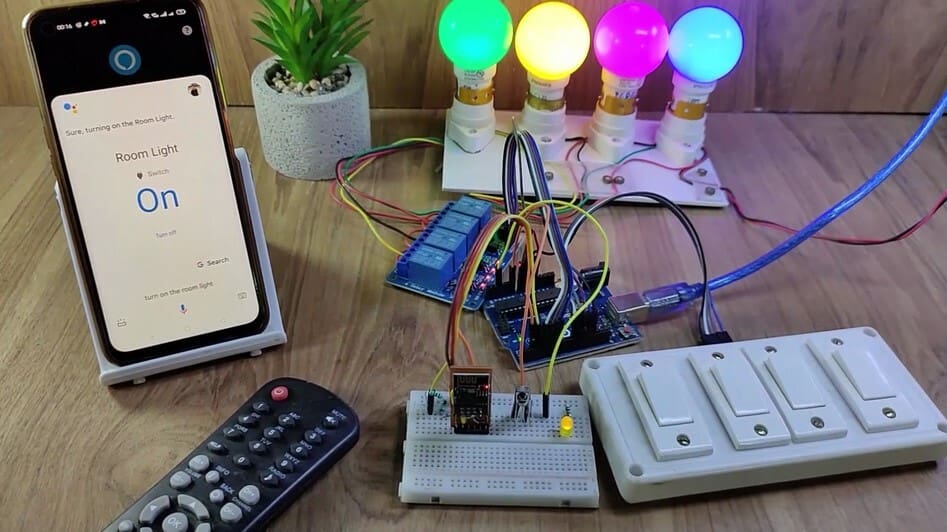
Making a smart home doesn’t just involve remote control automation; it’s about bringing a set of solutions that make your daily life as easy as possible. With this project, you can trigger voice commands, and even if there’s a network failure, you can still control everything through an IR remote or simple switches.
In addition to being able to control everything the way you prefer, you can also choose between using Google Assistant or Alexa and monitor everything in real time. Requests from Google Assistant and Alexa are redirected to the device using Sinric Pro, which is a free cloud service for up to three devices. If you need an additional device, each one will cost just $3 per year.
The author of this project has also created a PCB to optimize the assembly in a more professional and compact format, but it’s an optional addition. You can find the core information at GitHub.
- Designer: techstudycell
- Core components: Arduino Uno, Esp01, relay module, 1838 IR receiver, switches, USB to TTL converter
- Difficulty: Intermediate
- Where to get it: Instructables
Plant Communicator
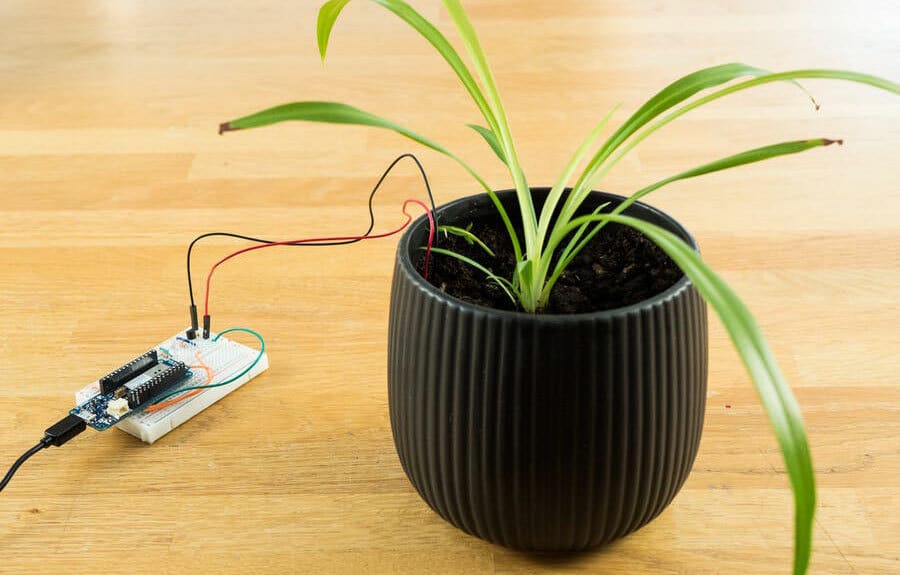
Understand your plants’ needs with this plant communicator!
In short, this project protects your plants’ health by monitoring their moisture, temperature, and light levels. It even emails you with information and graphs to keep you in the loop about whether you might be over- or under-watering!
In addition to all the necessary information on how to set up and get this plant communicator running, the creator of this project also includes a few additional tips in case you want to take your skills – or your plant’s situation – to the next level.
- Designer: Arduino_Genuino
- Core components:
- Difficulty: Intermediate
- Where to get it: Arduino Project Hub, Hackster
IoT LED Matrix
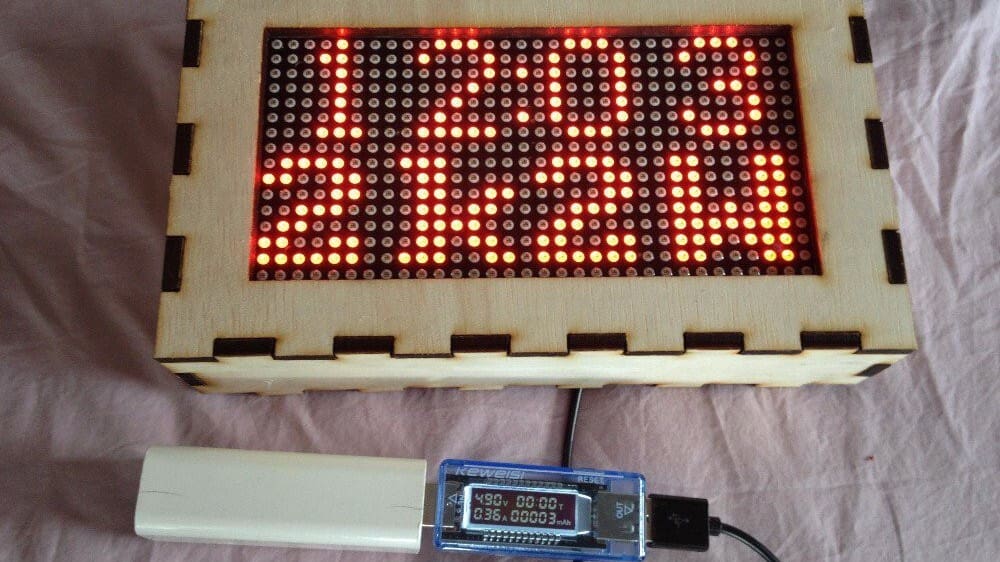
LED panels are a part of our everyday life in many places, including our homes, but they don’t always display or function exactly as we’d like them to, at least not until you make your own! In this project, the clock’s enclosure was made using laser-cut MDF, but of course, you can also experiment with other structures and even create a case using your 3D printer.
The author uses the OpenEnergyMonitor platform for home monitoring, collecting electricity consumption data from their solar panels, so it may be worth checking out if you are wondering what system you can use for the same goal, unless you’ve already got your own setup.
- Designer: TomTobback
- Core components: Arduino Nano, Esp8266, 32×16 LED matrix
- Difficulty: Intermediate
- Where to get it: Hackaday, Cassiopeia Ltd
Automatic Fish Feeder
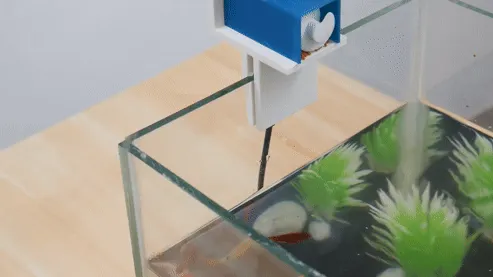
Aquariums are beautiful and can house a wide variety of fish and other animals (as well as some really cool prints), but with a busy schedule, things can get more complicated, and you wouldn’t want to leave your little pets hungry, right? This project allows you to remotely control the device through an app on your smartphone, ensuring everything is fine even if you’ve forgotten to leave things ready while rushing out in the morning.
To use the remote command functionality, you will need to create an account on Firebase, which is a web application development platform. In addition to the remote function for instant feeding, you can even schedule feeding times, so even your fussiest fish will be well fed. No matter what your fish’s menu consists of, it will be fed even if you’re not at home.
- Designer: CodersCafeTech
- Core components: Wemos D1 Mini V2, 360 Degree Servo Motor, USB Wall Adapter, USB Charging Cable, Instant adhesive, 3D printed parts, nuts and bolts
- Difficulty: Beginner
- Where to get it: Instructables
Smart Trash Can
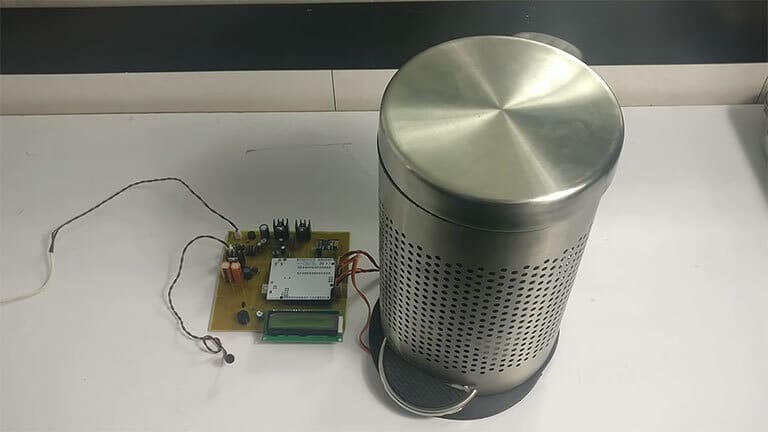
This is a smart trash can in the sense that it’s hands-free! It operates on claps or foot taps, and even notifies the user when it’s full.
This is made possible simply with an Arduino, an ultrasonic sensor, a Wi-Fi module, capacitors, cables, a breadboard, a transformer or adapter, a switch, an IC socket, and some mounts and joints.
Whether your hands are full or you just want to avoid the contact, this project will help you develop your Arduino skills and will provide you with as useful of a project as it gets.
- Designer: Nevon Projects
- Core components: Arduino Uno, ultrasonic sensor, microphone, Wi-Fi module, trash can frame
- Difficulty: Intermediate
- Where to get it: YouTube
Automatic Lights
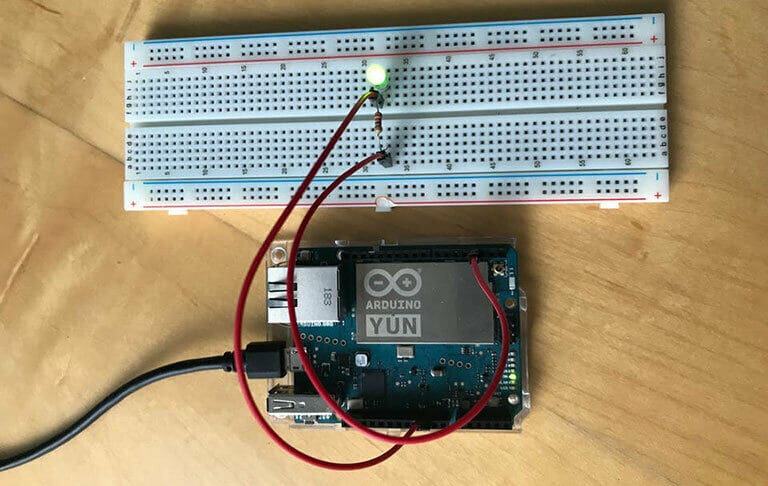
Based on the Arduino Yún, this simple project demonstrates the concept of automatic IoT lights. The device can monitor how far the user is from the house through GPS, and the lights will remain switched on as long as the user is in the house.
How this works is based on a very simple concept: Using Blynk, the phone’s geolocation is monitored and sent to the Arduino Yún. When in range, the Arduino will turn on the LED!
Want to move beyond a single LED? To control AC lights at your home, follow this tutorial on using a relay with the Arduino.
- Designer: Andrei Florian
- Core components: Arduino Yún, breadboard, resistor, smartphone
- Difficulty: Intermediate
- Where to get it: Arduino Project Hub, Hackster
Prepaid Energy Meter with Theft Alert
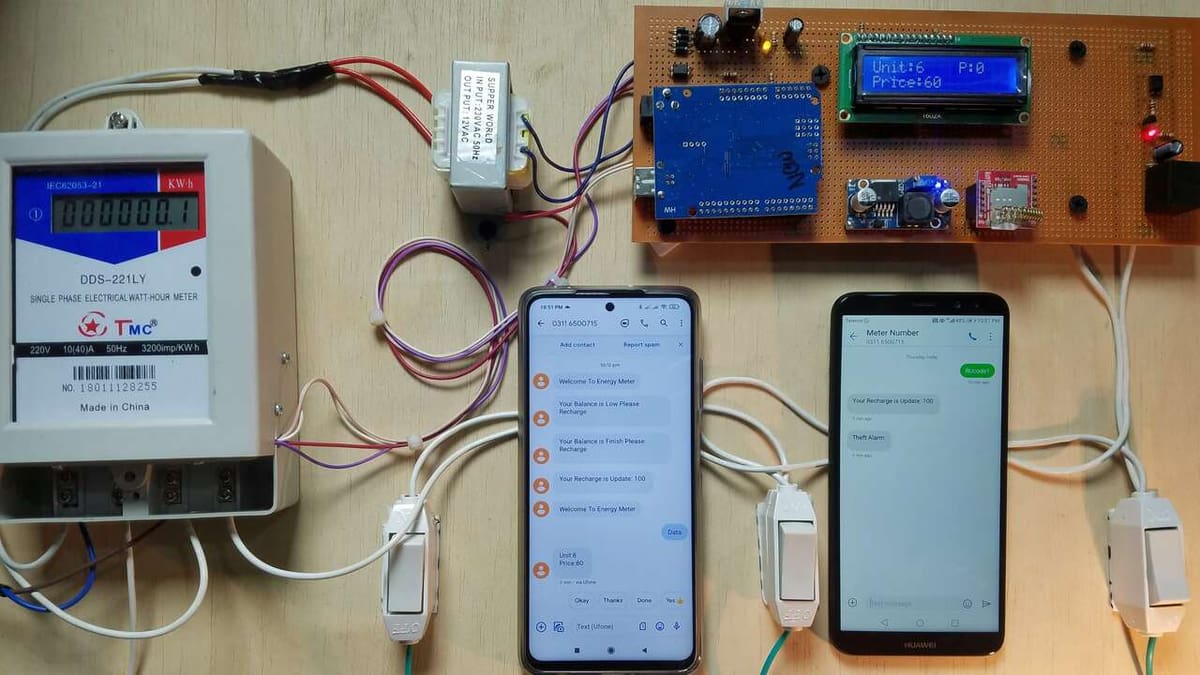
Here’s a system that might be exactly what you were looking for. There are many alarm and control projects out there, but measuring and remotely controlling energy consumption isn’t a very common feature. You can use this project, for example, to create a smartphone charging hub.
The system uses a common analog energy meter that can be easily found in electrical supply stores. To check the behavior of this project and get more details about the programming, there’s a video on YouTube where the author demonstrates its operation.
- Designer: Muhammad Ansar
- Core components: Arduino Uno, SIM808 board, 16×2 LCD, buzzer, relay module
- Difficulty: Advanced
- Where to get it: Hackster, GitHub
Robotics
Robotics can be found in IoT too! We already know that smart garden systems can monitor the water level and other environmental conditions of plants. When it comes to robotics, one example can be found in robot lawnmowers that are used to stop grass overgrowth. Some other examples include a cocktail mixing robot, a robotic arm, and a voice-controlled robot, all connected via Bluetooth.
Otto Ninja Starter Robot
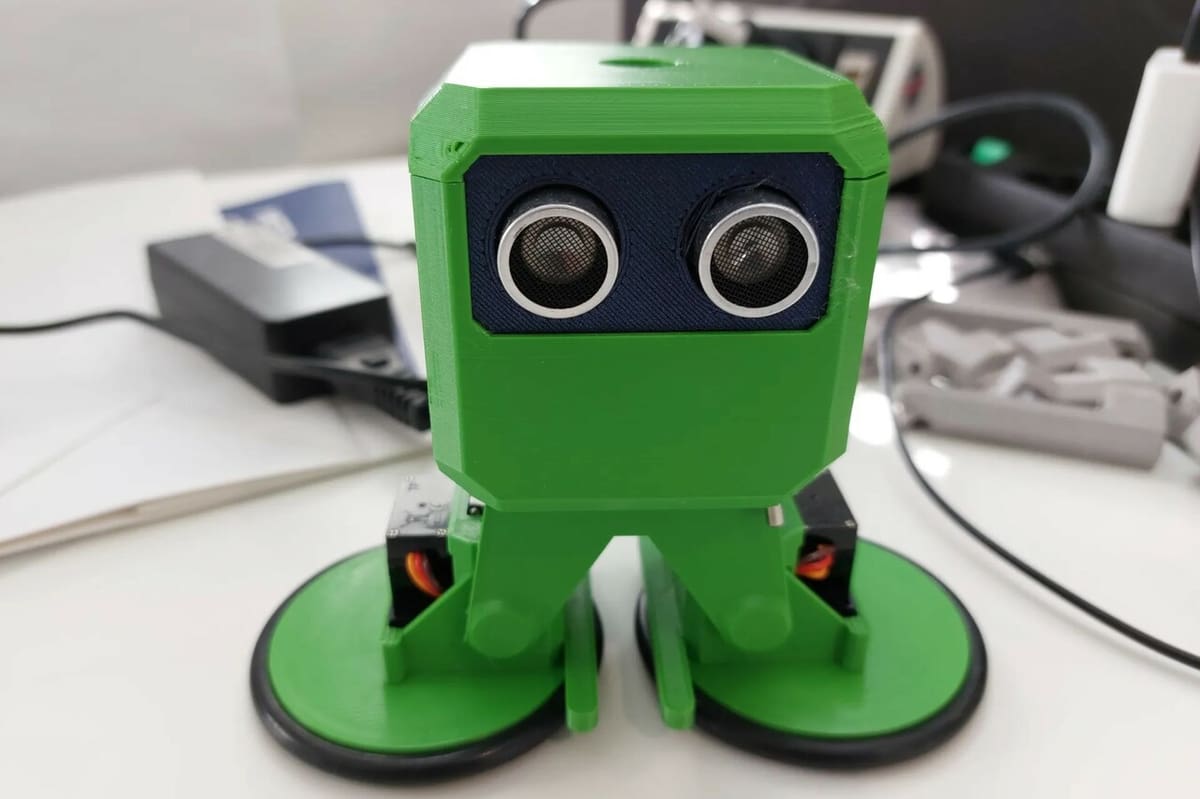
There are many robots out there, but with this ninja, you can easily learn to program in Arduino IDE or Otto Blockly. You can make this friendly robot dance, explore the environment, or even race against another ninja. There’s also an option to add a screen or LED matrix to give it a mouth and make it even more expressive with emotions.
This project has been optimized to use a custom project board, Wemos, or an Arduino Nano. The main library repository is for Esp-compatible boards so you can explore alternatives if you don’t have an Arduino.
Go ahead and send your ninja out to explore the environment while detecting movements and objects. It can quickly escape if something doesn’t go as planned with its wheels.
And there’s also a humanoid version by the same creators, with arms and even a sword in case you want to take things a step further.
- Designer: OttoDIY
- Core components: Wemos board with servo shield, metal gear servos, buzzer, ultrasonic sensors, 3D printed parts
- Difficulty: Beginner
- Where to get it: Printables, GitHub, animated build instructions
Voice-Controlled Robot
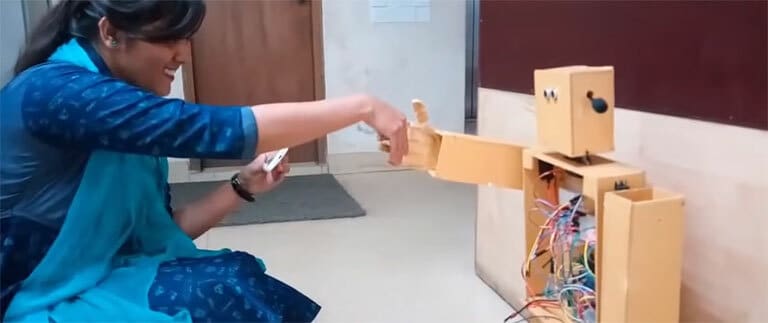
This robot demonstrates the various ways that a robotic system can be controlled. It can be operated by voice or wireless tech, or be in fully automatic mode.
The robot is capable of moving all its fingers individually and can move to the left or right. There’s a button to control the lights, get a temperature reading, and check for light intensity. You could also upgrade it with other sensors and hardware to customize it to do whatever you like!
- Designer: Hacks360
- Core components: Arduino Mega 2560, Arduino Nano, voice recognition module (v3), HC-05 Bluetooth module, LM35 temperature sensor, LCD display, ultrasonic sensor, SG90 servos,
- Difficulty: Intermediate
- Where to get it: Hackster
Cocktail-Mixing Robot
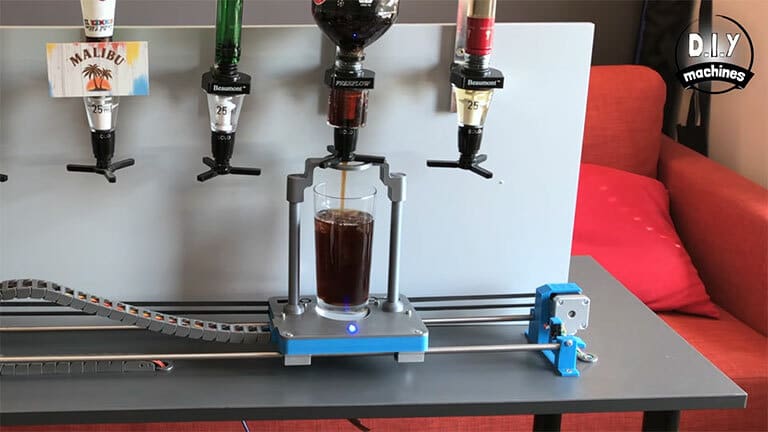
Isn’t it great when someone else is pouring the drinks? This is a robotic IoT bartender based on the Arduino Uno and Bluetooth module.
One of the main aims the maker mentioned was to create a device that’s low-cost and easy to replicate. The entire design runs on just eight AA batteries, so it’s also rather portable! It can be constructed from wood or 3D printed parts.
- Designer: DIY Machines
- Core components: Arduino Uno, motor shield, contact switch, linear bearings, HM10 Bluetooth module
- Difficulty: Intermediate
- Where to get it: Instructables
Robotic Arm
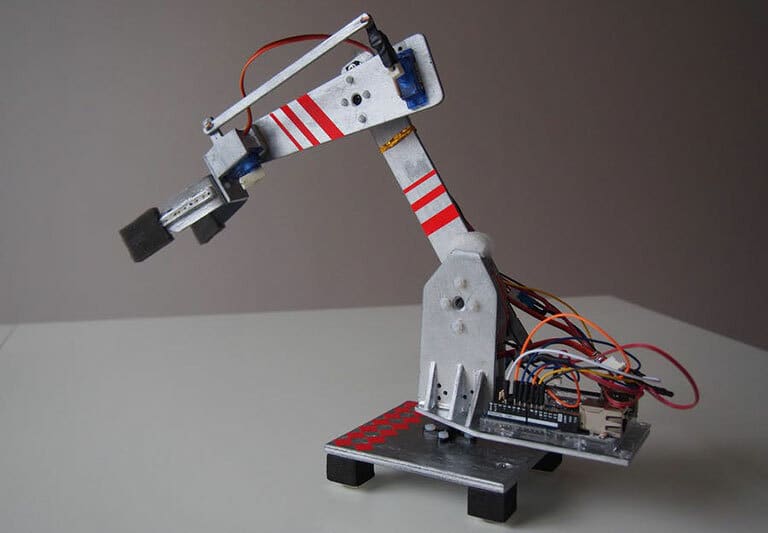
This is a robotic arm that can be controlled by the Blynk app. It’s capable of forward and inverse kinematics. The maker has written a new Arduino IDE library that allows for smooth motion.
If you’re wondering how strong it is, the arm can lift up to 100 grams! While the documented robot parts are made with wood, it’s completely possible to 3D print a robotic arm, too. Take a look at the EEZYbotArm, Serv-Arm, and BCN3D.
- Designer: aerdronix
- Core components: Arduino Yún, MG996 servos, LEDs, resistors
- Difficulty: Intermediate
- Where to get it: Arduino Project Hub
Fun & Wearables
The previous projects can make your life easier or really test your building skills, but what about some fun? We’ll go over a few projects that will entertain you from the technical side as you set things up, through actually using them for fun!
And it’s also good to know that wearable technology can be found worldwide, in fashion tech, skin electronics, and other smart devices designed to be worn. Another area it’s found in is healthcare. Health remains a top priority and this is reflected in many IoT projects found commercially and in the maker community.
Let’s take a look at a few builds that use an Arduino!
Arduino IoT Lego Train

Playing with Lego trains is a lot of fun, even for adults. But if you’re beyond the age range specified on the box, you might want to take it a step further. With this in mind, the author of this project decided to update the system to accept remote commands via Bluetooth, thus providing better control over both the train’s movements and lights.
This project offers a great opportunity to take your first steps into the Arduino IoT Cloud and transform your Lego toys into a genuine smart city. It’s important to remember not to connect the battery immediately after completing the circuit assembly to prevent overcharging, as you’ll need to upload the code using the USB cable, which also supplies power. Additionally, you can create a simple panel on the Arduino IoT Cloud to have a beautiful interface via your computer.
- Designer: buddhimaan
- Core components: Arduino Nano 33 IoT, breadboard, DC motor, dual H-Bridge motor driver, 9V battery, Lego train
- Difficulty: Beginner
- Where to get it: Hackster
Super Smart Chessboard
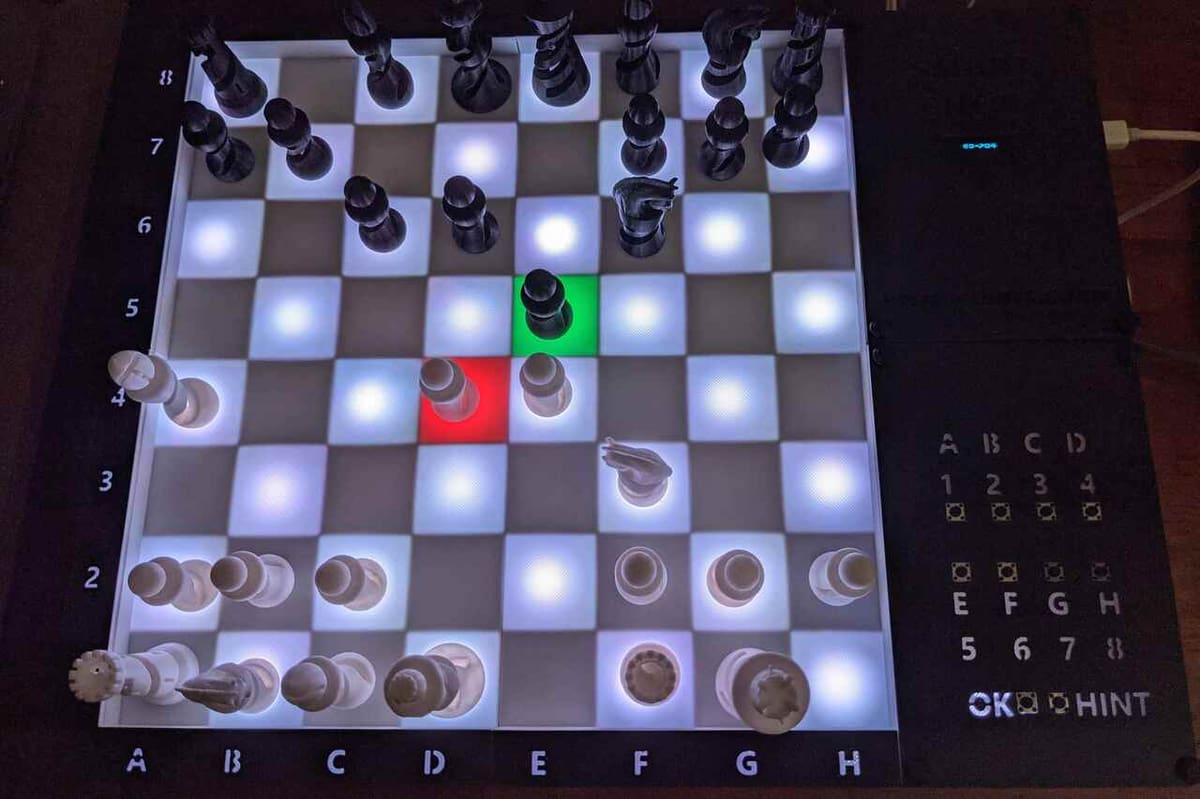
Tired of playing on your computer, staring at a screen, or waiting for months to meet up with your friend for a traditional board game? This is a smart chessboard that allows you to play both against the computer or against another player remotely. For this latter setup, you’ll need one at your place and the other at your opponent’s.
The board also alerts you of an illegal move, so even if you’re a beginner just learning how to play, you won’t get lost with incorrect moves and will even receive hints if needed. The backlit lights are more than just decoration; they light up and change color to indicate what to do. See more of this board in action in this video.
While the 3D printed parts can be found for free on Thingiverse, if you need the actual chess pieces, the project’s designer sells them on Etsy, so purchasing through the platform is a way of supporting them. These are beautiful, translucent pieces with high detail.
- Designer: DIY_Machines
- Core components: Arduino Nano, Raspberry Pi, LED strip, push buttons, MicroSD card, 0.96 Inch OLED screen, 3D printed parts
- Difficulty: Intermediate
- Where to get it: Thingiverse, GitHub, DIY Machines
Health Band
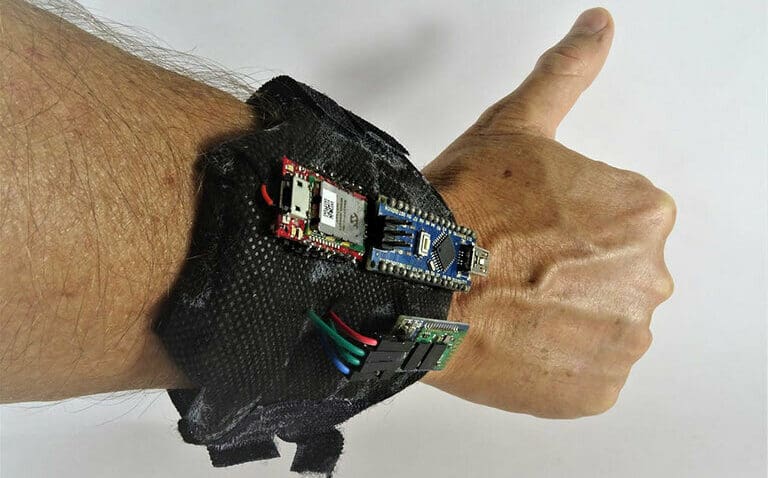
Without a doubt, healthcare systems face new challenges associated with the rapid growth of the aging population. This project aims to assist in health monitoring and communication. At the heart of this device is an Arduino Nano connected to a pressure sensor.
This virtual assistant device can monitor behavior and critical activities. For example, it could alert a family member of an emergency such as the wearer having fallen down. It also utilizes a counter to calculate the number of steps taken, so as to motivate the wearer to exercise. One of its other functions is a body temperature sensor that monitors for feverish conditions.
But the health monitor isn’t the only way that an Arduino can assist as a wristband wearable. For more inspiration, check out this alternative, an Alzheimer’s assistance device.
- Designer: Technovation
- Core components: Arduino Nano, Infineon DPS310, Espressif ESP8266 ESP-01,
- Difficulty: Intermediate
- Where to get it: Hackster
AI Robot Owl

Meet Archimedes, a wearable robotic owl that can read emotions! More specifically, it can read facial expressions to tell whether a person is happy or upset. If the person is excited, Archie will let you take a sticker or some other small giveaway.
Archimedes is powered by an Arduino MKR1000 showcasing the capabilities of Google AIY Vision. The body of the owl was 3D printed, designed to fit the dimensions of the AIY Vision kit and two servos.
- Designer: Alex Glow
- Core components: Arduino MKR1000, Google AIY Vision kit, MG996R servos, Raspberry Pi Zero W
- Difficulty: Intermediate
- Where to get it: Hackster
License: The text of "The Best IoT Projects Using Arduino" by All3DP is licensed under a Creative Commons Attribution 4.0 International License.






